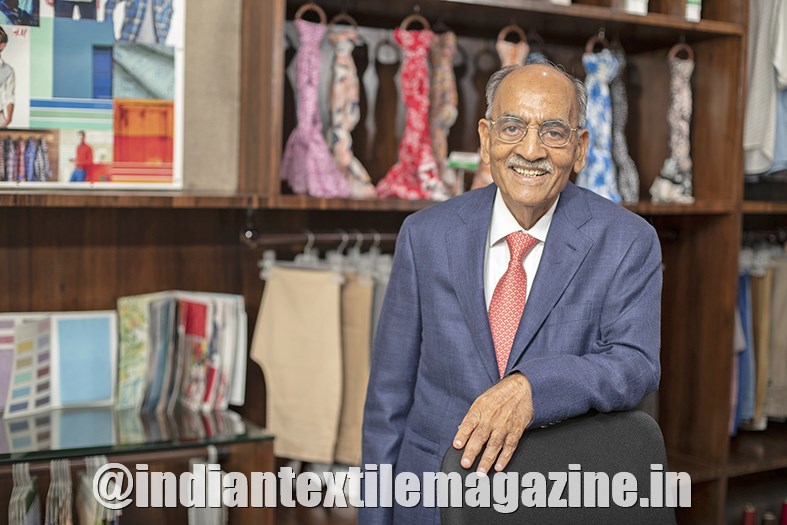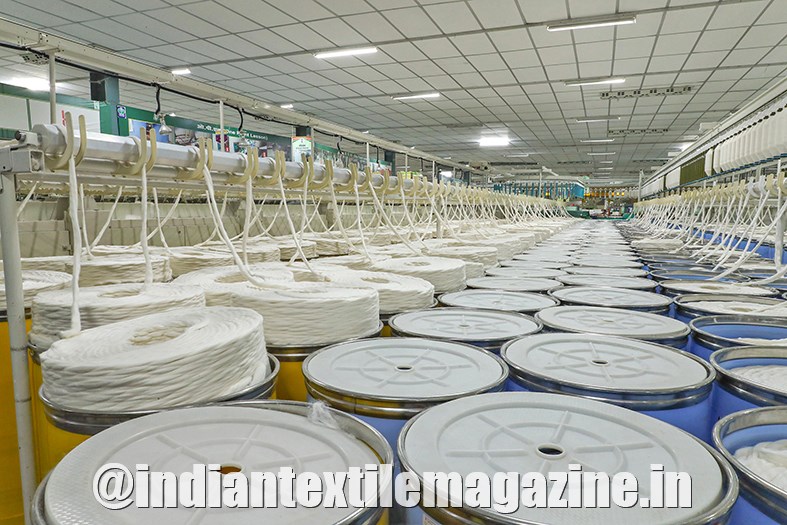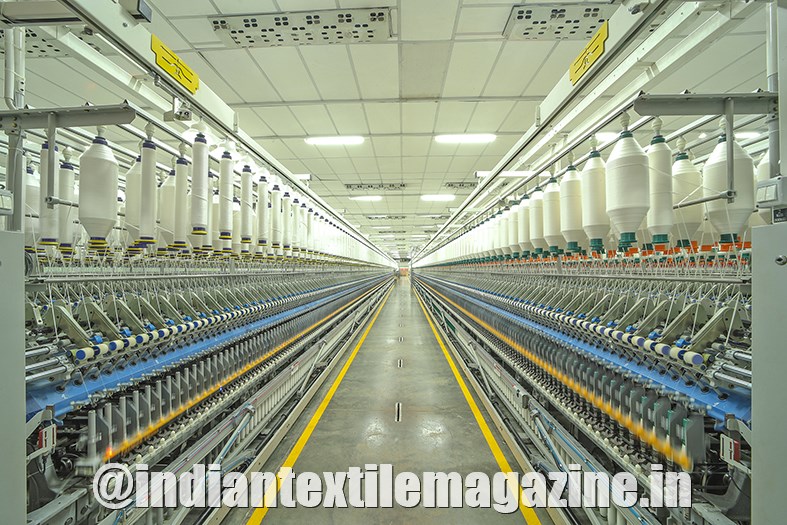The Vardhman group needs no introduction to Indian textile industry. The Vardhman group of companies is a major integrated textile producer in India. It manufactures fiber, yarn, sewing threads, fabrics, garments and special steels. It has over 1.1 million spindles capacity. It produce 20,000 tons of the acrylic fiber per annum, manufactures 43 tons of sewing thread per day, produces over 660 tons of the yarn per day, weaves more than 180 million meters of the fabric per annum, crafts more than 5,000 shirts per day and makes over 120,000 tons of the steel per annum. It has 25 manufacturing facilities across 6 states in India and has more than 28,000 employees. It is a USD 1.1 billion company and is exporting to 65 countries across the globe.

Vardhman Textiles offers the widest range of specialized greige and dyed yarns in cotton, polyester, acrylic and a variety of blends. It also manufacture value added products like organic cotton, melange, core spun yarns, ultra yarns (contamination controlled), gassed mercerized, super fine yarns, slub and cellulose yarns and fancy yarns for hand knitting.
Vardhman is in domestic and exports market in a 50:50 ratio. It has established itself as the prime producer of premium quality yarns globally. It is one of the largest exporters of cotton yarn to the most quality conscious markets like the EU, USA and the Far East. In the domestic market too, most of the yarn and fabrics sold is meant for big brands and garment houses which are exporting to big international brands.
Vardhman’s association with U.S. cotton dates back a long time. “Vardhman is consuming about 54000 tons of the man-made fiber and 2, 45,000 tons of the cotton on annual basis.
We are consuming 93 to 95 % of the Indian origin cotton and are importing about 5% to 7% of the cotton from USA, Brazil, Australia and Egypt. We have been importing the U.S. cotton from more than 3 decades. We are consuming the U.S. cotton mainly for the manufacturing of contamination-controlled textile products. US Upland and ELS cotton Pima is also used to meet the tag- driven demand of the customers/ brands,” stated Mr. S.K.Jhamb, Director-Materials of the company, highlighting the long association.
Speaking about Vardhman’s experience of U.S. cotton over the years in terms of quality, delivery and service, and the advantages gained by offering yarn or fabric in the global market, manufactured using U.S. cotton, Mr. Jhamb observed:” Our experience with U.S. cotton has been very good in terms of quality, delivery and Service. US has a very well-established system of quality testing of cotton HVI parameters which is done by the agency i.e. Agriculture Marketing Services of the USDA (United state department of Agriculture). The testing facility is world class, a benchmark for the entire cotton industry. This has built the trust among worldwide consumers of the U.S. cotton. Products made from U.S. cotton are one of the important products in our product range which we offer to our customers.”
“By offering Yarn and fabric made from U.S. cotton, we are getting the premium on account of contamination-controlled over the yarn/Fabrics made from Indian cotton which is handpicked and is contaminated. Yarn realization percentage in U.S. cotton is comparatively higher than Indian cotton, which is the feature of machine picked cotton,” he added.

Given a pandemic like the COVID, what changes does Mr. Jhamb foresee in the cotton sourcing? Mr. Jhamb said: “US Trust Protocol programme started by the U.S. cotton Industry seems to be very innovative and great leap towards the sustainable cotton production because it has set targets for the sustainability achievements.”
“In short run, we expect reduction in the cotton consumption more as compared to the other fibers. However, in the long run, we are of firm believe that the cotton consumption will revive to its previous level. We foresee the consumption of the US upland cotton in the contamination control knit wears, white application and light shades cotton fabrics. Pima demand will be for fine shirting fabric and home textile application,” is how he put it.

Mr. Jhamb mentioned: “We have been enjoying very healthy business relation with the U.S. cotton industry since long. As and when officials from the U.S. cotton industry are visiting India, they make it a point to visit Vardhman in their agenda for exchange of ideas and information. Senior Executives from Vardhman have regularly attended the Orientation Programme and U.S. cotton Sourcing summit in the last decade.”